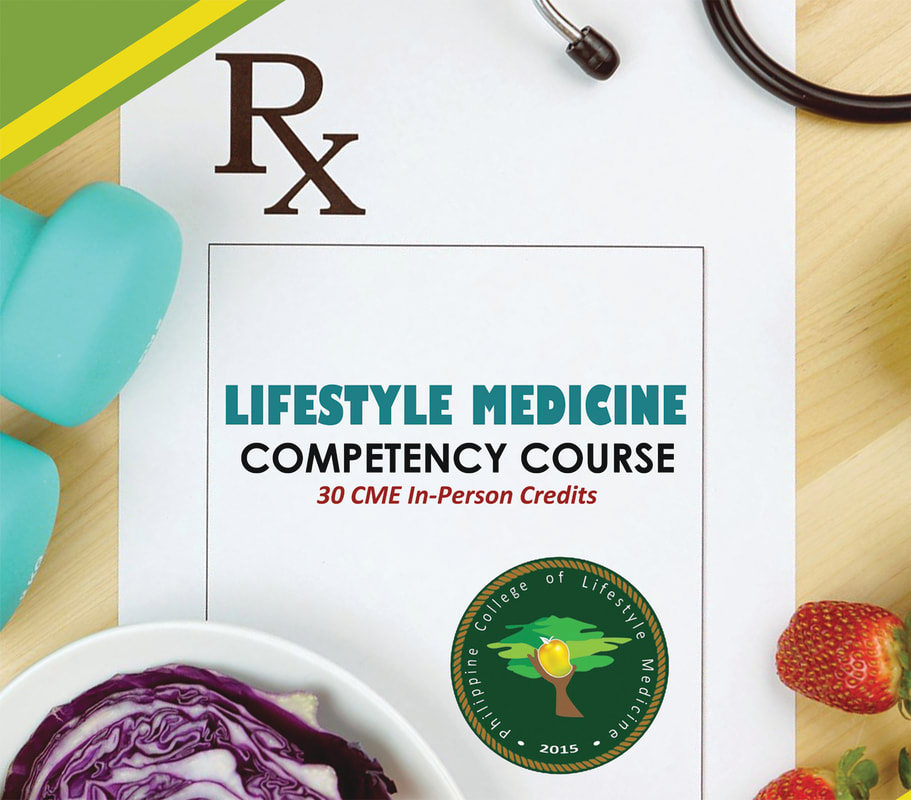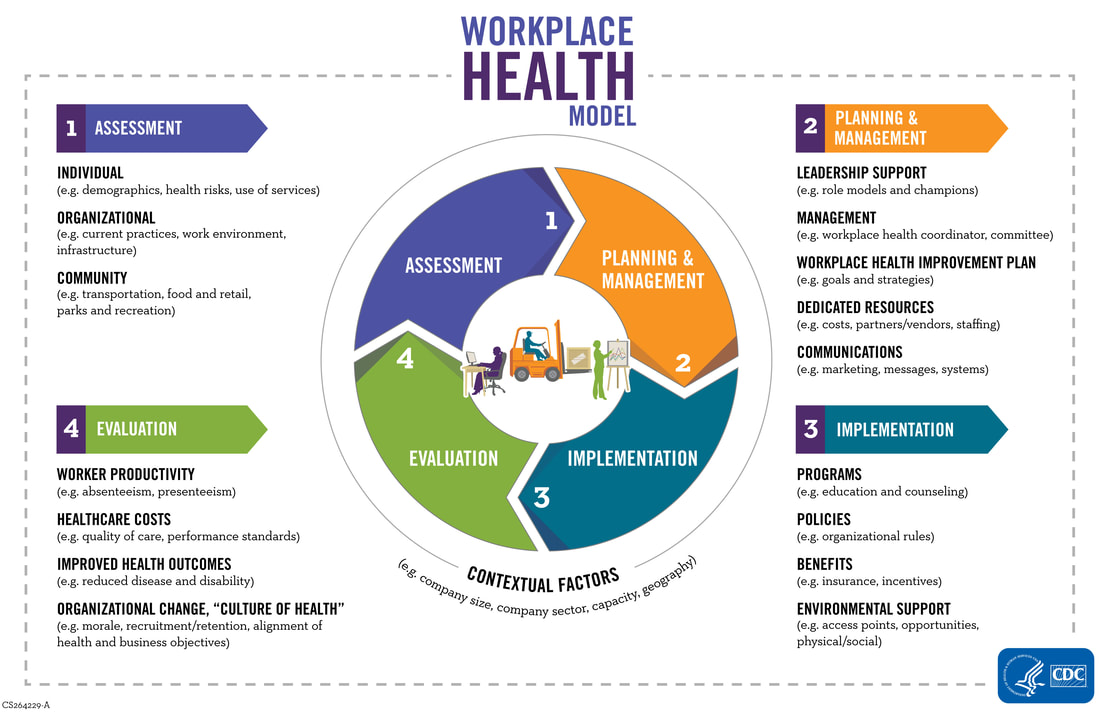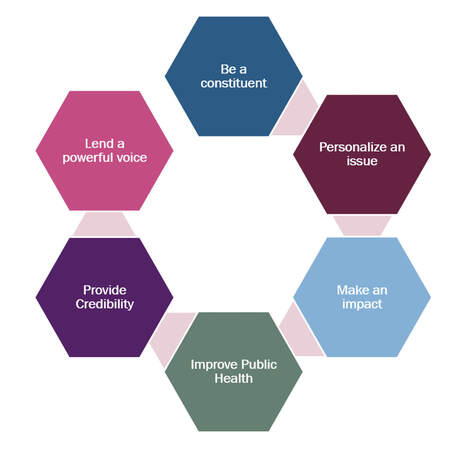MODULE 5 - Practitioner’s Personal Health and Community Advocacy
|
Providers as Role Model
Providers as Advocate |
Objectives:
|
In lifestyle medicine practice, the providers personal health practices is immensely emphasized. Health care providers that are routinely practicing healthy behaviors serve as role models for patients and achieve optimal personal well-being. Lifestyle medicine providers should seek to practice healthy behaviors and create school, work, and home environments that support healthy behaviors.
The need for public health advocacy is much needed now than it is before. The way we eat, drink, exercise, sleep, along with how we manage our stress and get health care has a great influence on the determinants of our health. Our current disease burden namely cardiovascular diseases, diabetes and cancer is due to an array of risk factors embedded in the environment one lives. People’s behavior is influenced by the availability of resources within their community and will impact the way they eat, drink, exercise, and consume risky substances. (Mary T. Bassett, 2003)
pROVIDER'S personal health behaviors
Most health care providers are not consistently practicing healthy behaviors. In one study of 498 primary care physicians, 53% were overweight or obese. A Canadian survey of physicians show 36% reported levels of exercise that did not meet Canadian Society for Physiology Guidelines.
Personal health habits impact the provider's patient counseling. In 19 of 24 studies, there was an established correlation between physicians' physical activity counseling frequency. It was also revealed that physicians are more likely to discuss obesity when they perceive patient's weight met or exceed their own weight.
In another survey of primary care physicians it was reported that those who exercise are more likely to counsel patients to exercise. A survey of female doctors revealed that personal behaviors correlate with likelihood of counseling patients on that behavior.
Personal health habits impact the provider's patient counseling. In 19 of 24 studies, there was an established correlation between physicians' physical activity counseling frequency. It was also revealed that physicians are more likely to discuss obesity when they perceive patient's weight met or exceed their own weight.
In another survey of primary care physicians it was reported that those who exercise are more likely to counsel patients to exercise. A survey of female doctors revealed that personal behaviors correlate with likelihood of counseling patients on that behavior.
Physicians' Health Practices and Counseling
Physicians' BMI and counseling
Physicians' Exercise Habits and counseling
Physicians' Diet
Physicians' BMI and counseling
Physicians' Exercise Habits and counseling
Physicians' Diet
strategies to support provider well-being
- Ensure access to physical activity opportunities for providers both inside and outside of the clinic/hospital
- Work with health care team and worksite to promote healthy meals at the health care setting.
- Employee wellness programs
- Physical activity breaks and healthy foods in office/clinic
- Standing work or treadmill stations
- Space for physical activity in office/clinic
- Digital apps to track activities and engage in competitions
PERSONAL HEALTH ACTION PLAN: ASSESS YOUR READINESS
- Choose one or more lifestyle behaviors to address
- Assess your readiness to change using the readiness to change ruler
Score above 7/10 shows you are willing to consider change. You may ask yourself why did you not place the mark to the left? This will allow you to identify your motivators. Then ask yourself why did you not place the mark further to the right? This will help you identify your perceived barriers. You may use the same scale for your confidence level in achieving an action plan.
IMPLEMENT PERSONAL HEALTH ACTION PLAN
Providers who practice healthy lifestyles are more likely to offer counseling to their patients, with the potential to improve both personal health outcomes, as well as health outcomes of their patients. Providers can then support healthy lifestyles with policies in the clinical/health care setting.
IMPLEMENT PERSONAL HEALTH ACTION PLAN
- SMART goals (Specific, Measurable, Achievable, Relevant, Time-based)
- Identify challenges and solutions
- Monitor progress
- Recruit a support team
- Celebrate success!
Providers who practice healthy lifestyles are more likely to offer counseling to their patients, with the potential to improve both personal health outcomes, as well as health outcomes of their patients. Providers can then support healthy lifestyles with policies in the clinical/health care setting.
workplace health programs
This refers to a coordinated and comprehensive set of strategies which include programs, policies, benefits, environmental supports, and links to the surrounding community designed to meet the health and safety needs of employees. This program is expected to lead to change at both the individual and the organization levels. For individuals, workplace health programs have the potential to impact an employee's health, such as their health behaviors; health risks for disease; and current health status. For the organizations, workplace health programs have the potential to impact areas such as health care costs, absenteeism, productivity, recruitment/retention, culture and employee morale. Employers, workers, their families and communities all benefit from the prevention of disease and injury and from sustained health.
community advocacy
Advocacy is a public support for a particular cause or policy. It comes from a Latin word “advocate” meaning “summon, to add a voice or call to one’s aid or support. Advocacy is a coordinated effort to defend, promote or protect something like a public health issue, cause, belief, or someone by influencing public policy debate, interacting with influencers.” This should be fostered in the community, or starting from the grassroots level for it to have a powerful impact on the general lives of the public not only at the national and global level.” It is also used to ensure that people, most especially the ones that are most vulnerable in the society are able to have their voice heard in issues that are important to them, have their views and wishes considered when decisions are being made about their lives.“ Understanding the process of community level advocacy spells great success. It helps one identify health and wellness needs and the role of the community and the potential partners. (Lifestyle Medicine Core Competency).
Advocacy can be generally understood as the process of building support for an issue to create change in attitudes, behaviors, policies, systems, or ways of doing things. Many organizations use advocacy to build support for a health issue, intervention, or technology among key audiences and move them to action.
The goal is to achieve a desired policy change to ensure that an existing policy is implemented. It is not enough to educate policy makers but to convince them to action. This influence can happen in the in the community, regional, national level, and global.
As physicians, we should get ourselves involved in activities that would can promote health and behavior change by influencing policy processes like laws, regulations, institutional practices. It is important to be engaged in the political processes to effect desired policy changes.
An advocacy can also be a coordinated effort to defend, promote, or protect something or someone by influencing public policy and this is powerful when done at the local community level. Community advocacy for public health identifies wellness needs and community's role and it effectively works when there is collaboration with community organizations and other stakeholders.
Advocacy can be generally understood as the process of building support for an issue to create change in attitudes, behaviors, policies, systems, or ways of doing things. Many organizations use advocacy to build support for a health issue, intervention, or technology among key audiences and move them to action.
The goal is to achieve a desired policy change to ensure that an existing policy is implemented. It is not enough to educate policy makers but to convince them to action. This influence can happen in the in the community, regional, national level, and global.
As physicians, we should get ourselves involved in activities that would can promote health and behavior change by influencing policy processes like laws, regulations, institutional practices. It is important to be engaged in the political processes to effect desired policy changes.
An advocacy can also be a coordinated effort to defend, promote, or protect something or someone by influencing public policy and this is powerful when done at the local community level. Community advocacy for public health identifies wellness needs and community's role and it effectively works when there is collaboration with community organizations and other stakeholders.
|
ADVOCACY INVOLVEMENT
ADVOCACY SKILLS GOALS
|
We engage our patients in our clinics and do health promotion, preventive medicine and co-create solutions to have better health outcomes but if we want to impact greater changes into these patients of ours, we should be able to engage the community.
1. Community advocacy for public health needs. Being an advocate and promoting the needs of the community can open doors for participation from different stakeholders, improve health services and mobilize the people to do healthier habits. One should be able to frame issues constructively by critically identifying the problem and providing solutions. In the fight against obesity, for example, overtime the focus of the advocacy shifted from the consumers’ consumption of sweetened beverages to the manufacturers of these drinks by increasing excised tax. Strategic effects of this shift paved ways to new areas for advocacy efforts, from emphasizing patient’s change in behavior to changing policies that govern the price and consumption of sweetened beverages. We work not only with our patient’s health but we should also be able to influence those in the position by creating an environment that is supportive of their overall health and well-being.
2. Goals of acquiring advocacy skills you need. skills in advocacy including the ability to collaborate with multiple stakeholders, be able to use of strategic media and social media platforms and the ability to conduct strategic analysis (what is the problem, what is the desired solution, and who is the target for change).
- You should build your capacity to advocate well and be familiar with the existing laws and regulations that is in place. You should be able to assess that gap where the health of the people is now and where the health of the people should be. Define the principles, make the purpose known and on how the policy will be able to help the community thus, the stakeholders will be empowered to do it responsibly and effectively. Education is key and even when it is in progress, continue to educate stakeholders so that they will be aware of the benefits of these policies.
- Understand the advocacy process. Advocacy involves the government, business sectors, schools and other institutions that can affect the community.
- You should be able to identify and address the barriers in achieving a healthy community.
- Access tools and resources for the community and patients. A local market which sells fresh produce, safe walkways for people to encourage walking, a community exercise program, support groups within the community, anti-smoking campaign are examples. Advocacy usually involves changing the opinion of the public and the community, and the government they are in. We should be able to mobilize whatever resources and identify sources of funding.
- Develop and implement action plan. A good advocacy plan will be able to respond to newly identifies needs for political support and awareness-raising in the community
3. Providers in the advocate role. Provide credibility to the change being advocated. The credibility of the one advocating change is likely to be a key factor in its success. One should be able to have the expertise and be able to influence decision makers and speak on behalf of those who are expected to benefit from it.
- Can identify preventive measures and positive solutions
- Can personalize an issue with patient stories and frontline experience
- Can advocate for health care change within their clinical care teams
- Can extend the impact of work in the clinic by connecting and engaging with the community
- Offer a powerful and credible voice that can help influence policy makers and politicians.
- Determine your time commitment and coalition support
- Discuss promoting an advocacy effort with your clinical practice team
- Agree on specific responsibilities and expectations before you get involved
ADVOCACY CHECKLIST
- Identify what specific trends and mindsets are present and how they might relate to the advocacy cause
- Identity who could help achieve the goals and who might oppose the issues and the underlying motivations
- Consider the ideal time to approach the audience.
- Define the problem. Identify desired solution/policy intervention (short and long term) why should the community support this initiative. Set Specific, Measurable, Attainable, Realistic and Time-bound goals so that they can stay on track and not be discouraged by the lack of visible progress.
- Define your advocacy goals. Once you have your SMART goals, get ready to define your message. Your message is what unifies your organization and attracts people to your campaign. Instead of “We’ll hold a meeting, your goal should be: We’ll hold a meeting for hypertensive patients in the Barangay Masagana Hall to invite them to a talk on the importance of lifestyle change. Put your goals in measurable terms. The more precise you are about what you want done, the easier it will be to see what and how much your group has accomplished. Instead of “Reducing the incidence of smoking in the community, use: “The percentage of smokers in our community will decline by 30% by the year 2025. Achievable goals will spark enthusiasm and avoid them becoming disappointed or discouraged. Set goals relevant to the current situation or problem the community is facing. What specific changes or trends have you observed related to healthy living? A date of completion should be set. It is important to know when you expect to achieve your goals, so you will know how to make necessary adjustments.
- Build your team and know your audience that you can work well together and represent all the needs of your advocacy. Have a team leader that is motivated and organize. Determine who is your audience and why should the community support the issue? Who can help you achieve your goals; who opposes the issue (and why)? When is the ideal time to approach the audience maybe before their session meetings so that they will be able to include it in their agenda in their next meetings. Target audiences tend to be decision makers, policy-makers, program managers, and those people who are in the position to influence actions on the general society as a whole.
- Identify what specific trends and mindsets are present and how they might relate to the advocacy cause
- Identity who could help achieve the goals and who might oppose the issues and the underlying motivations
- Consider the ideal time to approach the audience.
- Determine the strategy, tactics, timeline. Brainstorm strategies and write it down and store them in a file or folder so you will be able to retrieve them in the future. Tactics are the action steps. This is the part that shows and covers a wide range of activities, from writing proposal letters to making newsletters, to speaking up at a City Council meeting from setting up negotiations and doing surveys and field work. As you plan your tactics, make sure you carry out goals that are doable and are cost-effective, within what the community can afford and is available locally and that that funds are available and that stakeholders are willing to pay or support it while encouraging change for the good of the community. As you plan you may ask, what will be the scope of this action, who will carry this out, when will this action take place and for how long? Do we have the resources to make it happen? What resources are available? Which constituents should be involved? Which individuals and organizations might oppose or resist?
- Evaluate local outcomes. It is important to identify what is working or not and learn from the experiences. Evaluation are measured in a range of ways, from changed lives, to improved public health policies, increased health seeking behavior to increased participation in community activities. Even if your goals are not reached do not be discouraged because progress is generally incremental.
DEFINING SPECIFIC ADVOCACY GOALS
KNOW YOUR AUDIENCE
STRATEGY, TACTIC, TIMEFRAME & EVALUATION
- What specific changes or trends have you observed in your community related to healthy living?
- How will change happen?
- Can an individual or group make a request to the decision-maker(s)?
- Are there other guidelines (legal, regulatory) to consider?
- Is there an opportunity to public comment?
KNOW YOUR AUDIENCE
- Who is your target audience?
- Why should the community support the issue?
- Who can help you achieve your goal(s); who opposes the issue (and why)?
- When is the ideal time to approach the audience?
STRATEGY, TACTIC, TIMEFRAME & EVALUATION
- Develop strategies to help you achieve your goal(s)
- Discuss and commit to specific tactics
- Identify metrics: What are achievable goals?
- Evaluate success of local outcomes
SUMMARY
- Lifestyle Medicine practitioners have a role in community-based advocacy by contributing their expertise and leveraging their credibility.
- Even busy practitioners can integrate some elements of community advocacy into their professional work.
- Advocacy is important to effect policy change that supports healthy lifestyle of patients and the health team.
TASK - Reflective Journal |
Topics Covered:
|







